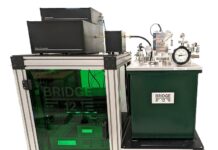
Platooning technology is seen by many as the future of vehicle travel and the potential improvements that platooning can bring to companies that operate large-scale commercial fleets could be extensive. Major vehicle manufacturers are investing heavily in developing technology in the hopes of being the first to achieve highly advanced levels of platooning that can be widely implemented on a consumer basis.
What is platooning?
Companies who operate a commercial fleet are continually searching for ways to improve efficiency. Some vehicle manufacturers and independent technology companies believe platooning could be the answer to improving efficiency.
Platooning is the process of linking vehicles together and controlling them semi-autonomously, which would allow them to operate at higher speeds while being closer together on the road. The theoretical benefits to platooning include improved traffic flow leading to improved vehicle efficiency due to slipstreaming and therefore lower CO2 levels being produced.
It is important to state that platooning does not involve removing drivers from the vehicles in a platoon. Drivers can choose to join a platoon which is being controlled by the lead vehicle. The result is a car train of vehicles travelling closer together and communicating with each other to maintain their road position.
The distances between vehicles must be safe enough for following vehicles in the train to react autonomously to any issues at the head of the train. Sudden harsh movements by the lead driver, however, mean that there would be very little chance of nearby manually-operated vehicles being able to avoid impacts.
How is modern technology used in platooning?
While fleets of semi-autonomously controlled vehicles travelling along the road sounds very futuristic, the systems that have been developed incorporate a range of technology which is familiar to many.
All current platooning tests have used forward-facing cameras along with two features which are now commonplace in mobile phones. Bluetooth is used to allow vehicles within the train to communicate with each other, and mobile data networks such as LTE is being used to keep vehicles in communication with central operating systems that monitor platooning. Data from the platoon is also sent to fleet managers via LTE once the commercial vehicles in the fleet have disbanded to update fleet managers records and provide information on the journey.
Radar is also used to connect the vehicles in a platoon, specifically to judge the distance between vehicles and match speed and breaking. With safety, a key concern for vehicles in a platoon, making use of radar-based collision avoidance systems is a crucial element of platooning.
Issues with platooning
While fuel saving figures have been estimated around 10% for a vehicle following the lead in a platoon train, in January 2019 one of the truck industries biggest name announced it was stopping its platooning program, due partly to lower than expected fuel saving in platooning tests.
Daimler Trucks CEO Martin Daum said, “Platoons do improve aerodynamics and fuel efficiency considerably in an ideal world, but not in real world traffic.”
Ultimately Daimler concluded that to generate the fuel saving to make the investment in platooning worthwhile, the conditions of the road and traffic would need to be ‘perfect’. According to Daum these perfect conditions occur only 20% of the time, and so a 4% boost in fuel efficiency is actually closer to 1%.
Daum added, “Platooning is a lot of hassle, but we would go through that hassle if it meant a 4% fuel saving for our customers. However, it’s not worth it for just 1%. While we cannot see a business case for platooning, we will keep an eye on it, in case we have missed something. If that is the case, we can always ramp it up again.”
Daimler instead will focus its efforts on getting its commercial vehicles to Level 4 autonomous driving, which requires no driver interaction with the vehicle to rectify an issue.
Another option for commercial fleets
As stated one of the proposed benefits of platooning is the improved fuel efficiency and reduced CO2. While there is now some debate as to if this platooning can significantly improve fuel efficiency, there is a way to improve fleet efficiency that has proven to be effective. While discussing the future of vehicle platooning and its impact on commercial fleets, it’s interesting to note that specialized transport services, such as traktortransport, could also benefit from these technological advancements, ensuring safer and more efficient transportation solutions.
Vehicle tracking technology has shown significant improvements to the fuel efficiency of a commercial fleet in numerous cases. Through solutions such as in-cab coaching, commercial driver’s behaviour behind the wheel can be improved which leads to improved fuel efficiency.
Audio and visual feedback alerts drivers to actions which have been proven to contribute to increased fuel usage such as harsh acceleration, speeding and idling. Installing these devices across a whole fleet can have a significant impact on the fuel usage of a business along with improved driver safety for all road users.
With the telematics data produced from vehicle tracking, fleet managers can then identify drivers who would benefit from driver training, along with those who’s driving should be praised.
With the option of platooning being implemented still years away, vehicle tracking represents an alternative which has proven to improve fuel usage across a commercial fleet which directly leads to significant savings for businesses and an improvement to environmental pollution. Only when platooning has been deemed safe and reliable will the data be available to compare the improvements to commercial fleets operations directly.


















